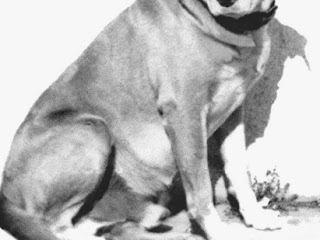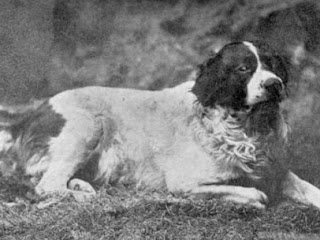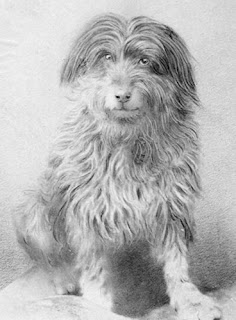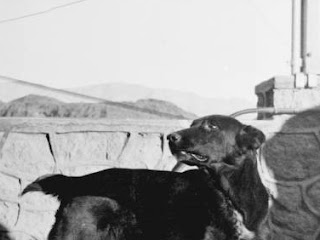Shep became famous in history as a highway mascot who greeted motorists at the toll booths on the Denver-Boulder Turnpike.
In 1950, during the construction of the Boulder-Denver turnpike, a stray puppy wandered into the site where the workers would share bits of food with him. In 1952, when the turnpike opened to the motorists and the construction workers left, the timid dog began begging for food from the toll booth attendants. One cold night one of the attendant's working was able to coax the dog into his booth. The dog found a warm place to lie down and the attendant found company to better his night. Soon the dog, who was named Shep, became close friends with all the attendants.
Shep loved his new home and the motorists were thrilled to be greeted by the dog. In fact, drivers would pay a little extra to help buy dog food, give dog toys and treats, and even pull over to have their picture taken with Shep. It didn't take long for the Colorado Department of Transportation to make Shep the highway's unofficial mascot.
Despite all the love and attention Shep received, he still liked to roam off on his own at times but would always return. One day in 1958 he returned limping after he was mysteriously shot. Clyde Brunner, a Broomfield veterinarian, treated the dog for free and continued to donate his services for the rest of Shep's life.
In 1964, Shep was losing his sight and could barely get around. On August 3 of that year the men who loved and cared for him made the difficult decision to put Shep to sleep. The highway superintendent buried Shep next to the US 36 on-ramp. Two headstones were donated by residents, one with the inscription "Shep 1950-1964, Part Shepherd - Mostly Affection" and the other "Our Pal". Some suggested getting another toll booth dog but one attendant insisted "...nobody could take Shep's place...never".
The extra money the motorists paid, which was more than enough to feed and care for Shep, went towards the cost of the turnpike. In 1967, the turnpike was paid off, 13 years earlier than originally expected. In 2009, due to ongoing construction, Shep's grave was moved to Zang Spur Park, next to the Broomfield Depot Museum.
"He always wagged his tail at everyone who came by, and he was always happy," said Jane Spain, who helped lead the effort to move Shep's grave. "For everyone that went back and forth on the turnpike, he was their favorite thing."





























